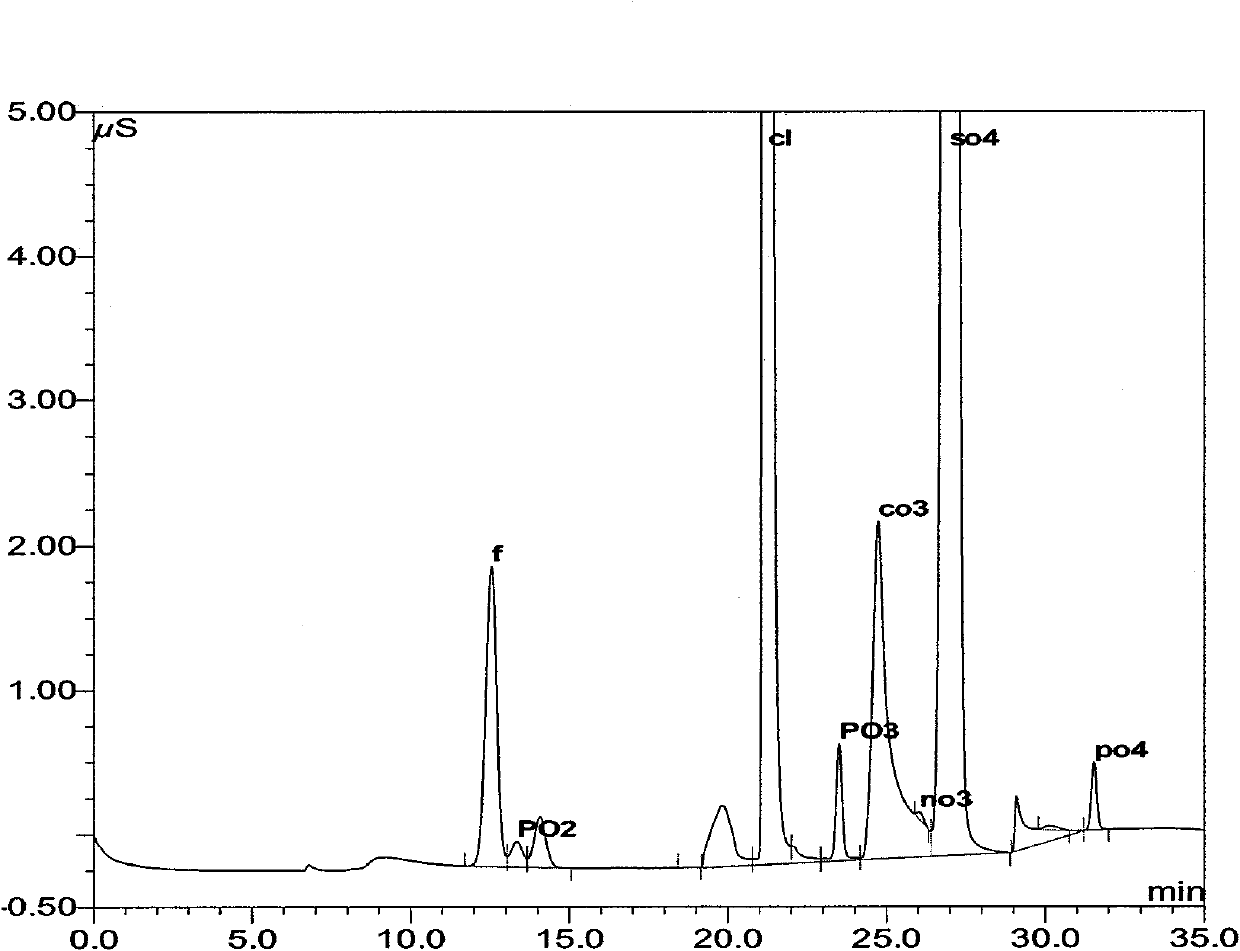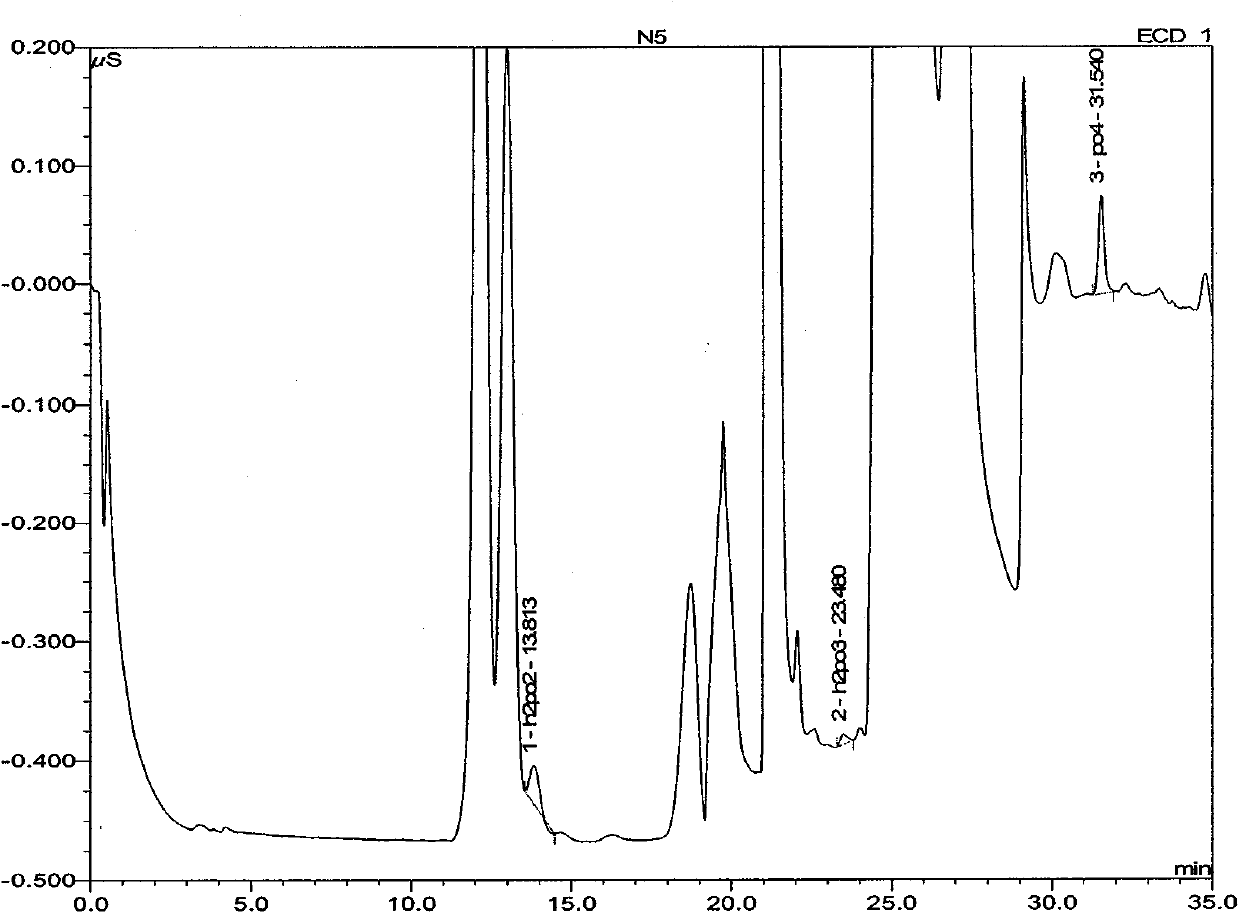Method for determining trace low-valent phosphate in natural water
A determination method and phosphate technology, applied in the field of water treatment, can solve the problems of long time unsuitable for low-valent phosphate detection, high detection limit, complicated operation, etc.
- Summary
- Abstract
- Description
- Claims
- Application Information
AI Technical Summary
Problems solved by technology
Method used
Image
Examples
Embodiment 1
[0077] The concentration of low-priced phosphate was determined according to this method from the overlying water of the bottom mud of Dapu Harbor (N1), Meiliang Bay (N2) and Gonghu Bay (N3) in Taihu Lake, Jiangsu Province.
[0078] A. Collection of samples to be tested
[0079] Use a water collector to collect the overlying water from the surface of the bottom mud, then put it into a brown HDPE bottle, add an appropriate amount of chloroform and dilute nitric acid solution to adjust the pH value to be acidic, and store it in a sealed refrigerator. Take it to the laboratory immediately for analysis.
[0080] B. Sample pretreatment and determination
[0081] Take an appropriate amount of water sample, pass through a 0.22 μm water-based microporous membrane, and then pass the filtrate through an OnGuard Ag column (2.5cc P / N057090, Dionex) and an OnGuard Ba column (2.5cc P / N 057094, Dionex) to remove high-concentration Chloride ion (Cl - ) and sulfate (SO 4 2- ), and then th...
example 2
[0093] Example 2. from surface water (river, well water) in a certain area of Jiangsu, according to the method measurement results:
[0094] Table 3 Determination results of phosphite in surface water of Jinjiang, Jiangsu
[0095]
[0096] Note: Well water samples were not detected
example 3
[0097] Example 3. From the interstitial water of different layers of sediment in Gonghu Bay, Taihu Lake, Jiangsu, the measurement results according to this method:
[0098] First, use a columnar mud sampler (Institute of Geography and Limnology, Chinese Academy of Sciences) to collect 50-60cm columnar mud samples, divide them into layers of 20cm, store them in cold storage, and extract water samples from sediment gaps by centrifugation. CT15RT desktop high-speed refrigerated centrifuge settings: Speed: 5000r / min; Time: 20min; T: 4°C. Take an appropriate amount of water sample, pass through a 0.22μm water-based microporous membrane, and then pass the filtrate through an OnGuard Ag column (2.5cc P / N 057090, Dionex) and an OnGuard Ba column (2.5cc P / N 057094, Dionex) to remove high-concentration Chloride ions (Cl - ) and sulfate (SO 4 2- ), and then the extracted water sample enters the ion chromatography system through a 500μL sampling loop for analysis and determination acco...
PUM
 Login to View More
Login to View More Abstract
Description
Claims
Application Information
 Login to View More
Login to View More - R&D
- Intellectual Property
- Life Sciences
- Materials
- Tech Scout
- Unparalleled Data Quality
- Higher Quality Content
- 60% Fewer Hallucinations
Browse by: Latest US Patents, China's latest patents, Technical Efficacy Thesaurus, Application Domain, Technology Topic, Popular Technical Reports.
© 2025 PatSnap. All rights reserved.Legal|Privacy policy|Modern Slavery Act Transparency Statement|Sitemap|About US| Contact US: help@patsnap.com



